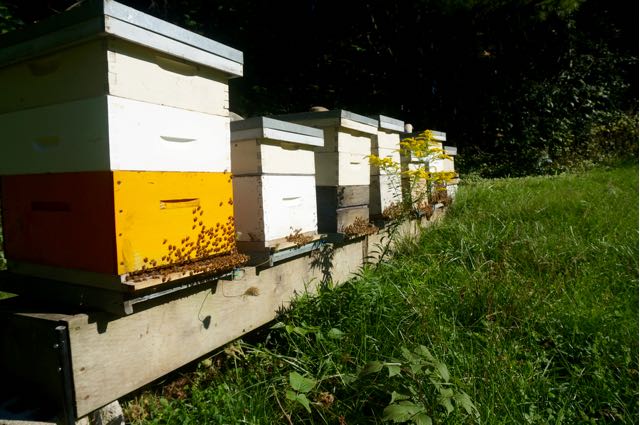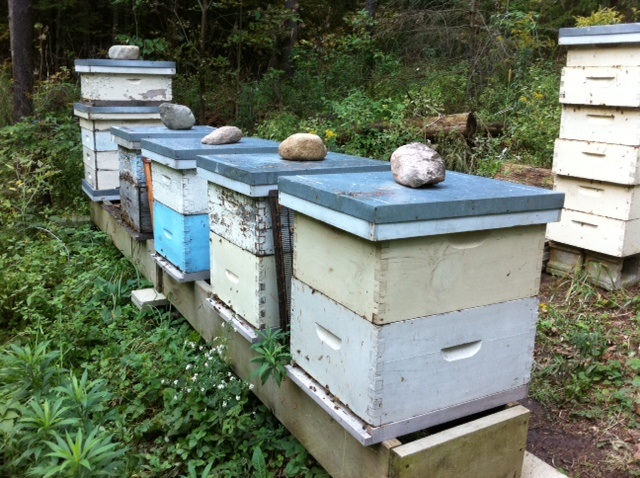Bee Yards
Creating Happy Homes for Honey Bees: What makes a bee yard thrive, from hive design to the ideal spot for your buzzing residents
LOCATION, LOCATION, LOCATION
The ultimate dream home for a honeybee is about the size of a small aquarium, has a ground-level south facing entrance, enclosed leak-proof walls and is free from predators. Most urban and commercially raised honeybees have their housing decisions made for them by their attending beekeeper. Homes made for bees generally have one goal in mind: to make it easier to harvest the fruits of the bees’ hard labour.
Wild bees know no boundaries, but a domesticated honeybee will be encouraged to reside in fabrications ranging from crude hollowed-out caves, logs, called bee gums, to woven skeps, Langstroth boxes, top-bar hives, and other modernized contraptions. Some of the newer hives are designed to sit inside a windowsill and have a built-in honey extraction feature.
The Langstroth Hive
In all my years as an urban beekeeper, I’ve become most familiar with the Langstroth hive, a design that revolutionized beekeeping in the mid-to-late 1800s. Reverend L.L. Langstroth created the movable-comb hive, a rectangular “bee box” with vertical wooden frames where bees build their wax comb. The Langstroth hive is renowned for its efficiency, making it the go-to choice for commercial beekeepers in rural areas and hobbyists alike.
While the Langstroth remains my hive of choice, many hobbyist beekeepers also experiment with other types, like top-bar hives, Warre hives, or even observation hives that offer a unique window into the world of bees. Each design has its own appeal, but regardless of the hive, the key to success lies in choosing the right location and understanding the needs of your bees.

Optimal Apiary Location

While hive design is important, the real key to a thriving colony is choosing the perfect spot. Whether in a rural or urban setting, the right location ensures your bees are healthy and productive. Beekeepers should consider several factors when selecting an apiary site: a nearby source of forage, access to water, minimal vibrations or noise pollution, and a hive entrance facing south, east, or southeast. For urban beekeepers, it’s also crucial to be mindful of your hive’s proximity to other hives, the height of the apiary, and adherence to local bylaws and regulations.
THE BEST BEE YARDS
Given the many flight paths I have taken to visit bee yards around the world I am compelled to feature some of my favourite yards with you here. If you have an apiary you’d like me to know about or one that you think I should visit please send me a picture by reaching out to me on Instagram @beegrrlto, or email BEEGrrl at orders@beegrrl.com

